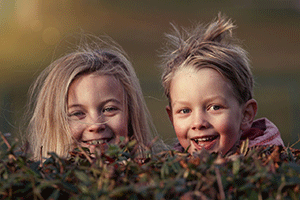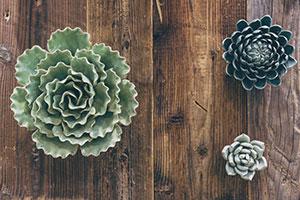Gardening is a fun and inclusive activity that people of all ages can enjoy. As well as being something different for the children to experience, it can also be beneficial for their well-being and education. Together with Suttons, an online retailer and gardening expert, we take a look at the benefits of gardening for children and ways to encourage their participation.
The advantages of encouraging children to take up gardening
Being outside and working with plants are excellent ways to boost fitness and knowledge. Currently, there is a worrying statistic that 75% of UK children spend less time outdoors than prison inmates! Kids are becoming more interested in tablets and smartphones and tend to spend more time in the house, so gardening is a great way to get youngsters involved with something different.
Sensory development in little ones gets a boost from exploring, playing and learning outside among lots of different textures and colours. This could involve letting them play with the mud, splash in some puddles and get their hands dirty! It also helps your child build their vocabulary, as they’re exposed to plants and creatures that they wouldn’t if they were indoors. What’s more, the garden can captivate the with brightly coloured flowers and scented garden plants.
Here is research into the benefits of gardening at a young  age:
age:
- Kids who grow their own products are more likely to eat fresh fruit and veg.
- After participating in a one-year gardening programme at school, pupils aged 8-11 years showed a significant increase in the ability to work in groups compared to those children who didn’t participate at all.
- Youth interns in community gardens showed increases in maturity and interpersonal skills.
- Students expressed an increased understanding of ecology and responsibility to care for the environment.
What activities can help kids get involved with gardening?
You have a host of fun activities to make being in the garden an exciting and enjoyable experience at any age. As well as having structured games, it can be good to let your child take the lead on what they want to do in the garden — they might use their imagination to come up with an activity. What about older kids?
Try something constructive — such as building a bird feeder out of a plastic bottle to encourage wildlife into the garden.
Here’s how: 
- Create two holes opposite each other at the bottom of the bottle.
- Insert a stick through this to create a perch.
- Make feeding holes close to the perch (not too big or else the feed will fall out).
- Create holes in the neck of the bottle.
- Pass string through the neck holes and hang the bottle from a branch.
- Unscrew the lid and fill with seeds for the birds.
If you want to get very young kids involved, try walking them around the garden and search for clues to which animals have been there previously — such as feathers from a wood pigeon or tiny tracks from a hedgehog.
Growing your own produce On top of crafts, why not also grow your own vegetables and plants with your children, grandchildren or students? This is a good way to get them regularly involved in the garden and monitor their own progress.
Seeds
The key is to make sure you maintain your child’s interest when growing their own produce. So, choose something that is easy to plant and quick to grow — vegetables such as potatoes, carrots and spring onions are all easy to grow and maintain. Even better, try and choose food that they like eating, so they can enjoy the entire process of planting to meal-time!
Why not try planting the below, too:
- Cress — a fast-growing plant that can be grown indoors and outdoors and added to a salad.
- Sunflowers — tall-growing so children can practise their measuring skills.
- Mimosa Pudica (a dancing plant) — when it is touched, its leaves ‘dance’ and curl up.
Trees Unlike vegetables, growing trees takes a lot longer. However, it’s a great gardening project to start.
Here are the easiest trees to grow in the garden:
- Conkers —from a horse chestnut tree.
- Acorns — from an oak tree.
- Helicopters — from a sycamore tree.
Planting isn’t difficult either — just use a pot, soil and compost. Later, you and your young gardener can transfer it to a bigger pot.
These are just a few ideas to encourage gardening among youngsters. Make the most of summer 2018 and try a few out!
for more information about gardening for kids please click here


 age:
age: 


